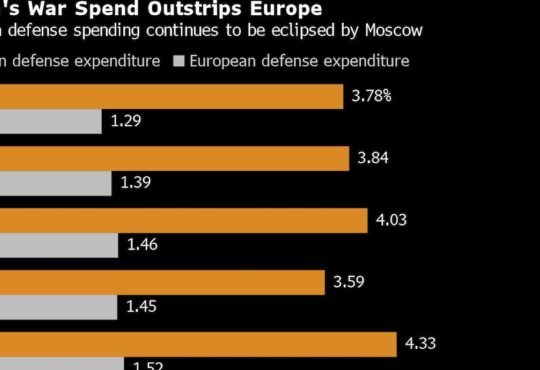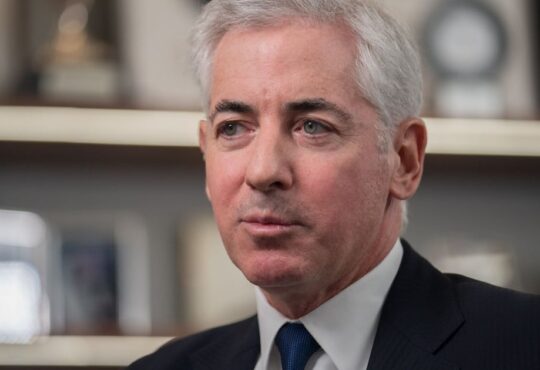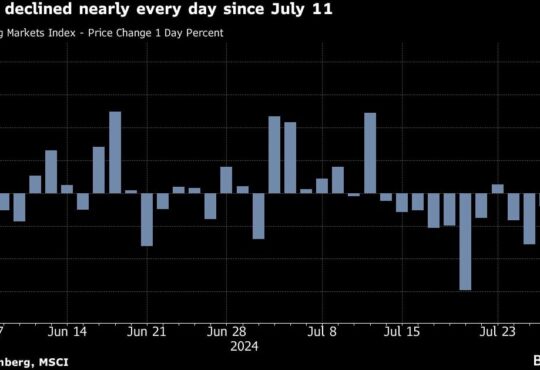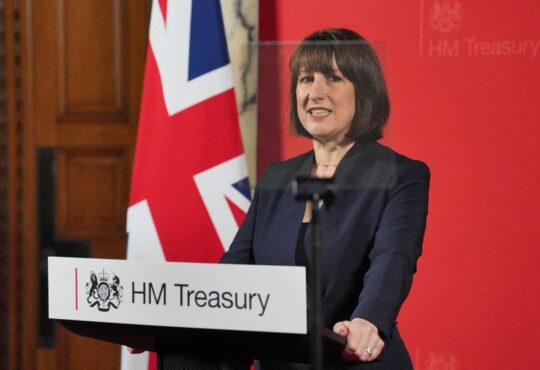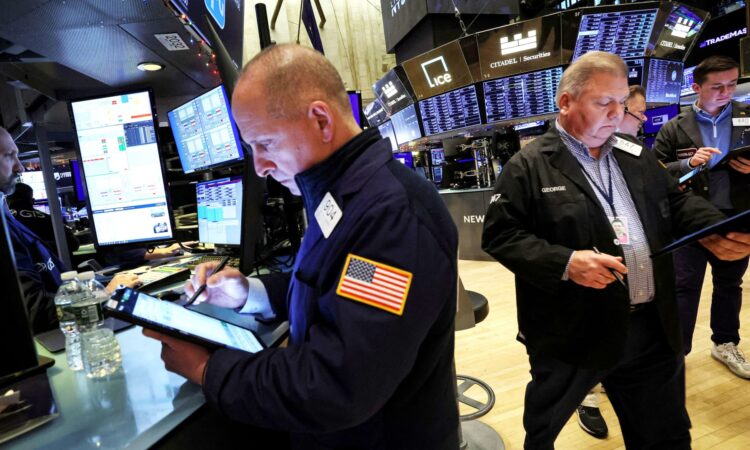
International and emerging market stocks seen returning most over next 7 years, GMO says
International stocks, but especially emerging market stocks — and most notably emerging market value stocks — offer the greatest likelihood of outperforming large and small stocks in the U.S. over the next seven years, even after adjusting for inflation, according to the latest monthly projection from Grantham Mayo Van Otterloo & Co.
Emerging market value stocks are likely to return a real 9% per annum over the next seven years, while emerging market stocks as a whole are forecast to return 5.2% a year. International small-cap stocks are projected to return a real 4.5% while international large-cap stocks come in at 2.4% a year, after inflation.
The U.S. isn’t forecast to keep up, with U.S. small caps projected to shrink 1.4% each year after inflation, and U.S. large caps estimated to fall an average 1.8% annually over seven years.
Similarly, emerging market debt is likely to end up as the best-performing fixed-income class, returning a real 3.5% annually, followed by U.S. cash at +0.8%, U.S. inflation-linked bonds at 0.3%. International bonds hedged against currency exposure are forecast to lose 1.8% a year and U.S. bonds to return -0.3%.
As stocks floundered in 2022, valuations improved and the outlook for future returns has brightened. At the start of 2022, GMO pegged emerging market value stocks to return +5% annually over seven years, emerging market stocks +2.2%, international small caps -1.2%, international large caps -2.5%, U.S. small caps -6.5% and U.S. large caps -7.3%.
U.S. cash was projected to lose the least amount of money at the start of the year, falling 1.1% a year after inflation looking out over the next seven years, followed by emerging market debt at -1.7%, U.S. inflation-linked bonds (-3.7%), U.S. bonds (-4.1%) and currency-hedged international bonds (-4.7%).
— Scott Schnipper
Texas business activity falls further into contraction, Fed survey shows
Business activity in Texas contracted more than expected in December, weighed by slowdowns in new orders, the Dallas Federal Reserve reported Tuesday.
The general business activity index in the Dallas Fed’s monthly manufacturing survey posted a reading of -18.8, worse than the -14.4 November reading and below the -15 Dow Jones estimate. The index measures the percentage of firms reporting expansion against contraction.
New orders and growth rate of new orders remained mired in negative territory, with respective readings of -9.2 and -9.3, though both were better than November. The biggest month-over-month negative change came in capital expenditures, which posted a -2.1, good for an 11.4-point decline.
On the positive side, the overall production index registered a 9.7, after being slightly positive in November.
—Jeff Cox
Apple, Tesla trading at 52-week lows
Tech shares slid as bond yields ticked higher on Tuesday, with Tesla shares slumping more than 6% to fall to a fresh 52-week low of $114.12. The stock is trading at levels not seen since Sept. 2020.
Apple slipped more than 1% to reach a new low of $128.72, slumping to levels last seen in June 2021.
Lumen Technologies, meanwhile, fell to lows dating back to 2008 – when the CenturyTel/Embarq merger created CenturyLink, the name Lumen was known as until 2020.
A handful of companies also reached fresh 52-week highs.
J.M. Smucker is trading at all-time highs dating back to its debut on the public markets in 1959. Merck shares are trading at all-time highs dating to 1978. Specialty insurer Arch Capital Group is at levels dating back to 2000 when its shares began trading on the Nasdaq.
Lamb Weston is trading at levels last seen in February 2020, and Caterpillar is trading at levels not seen since June 2021.
— Darla Mercado, Chris Hayes
Odds favor an up year for markets in 2023, says Carson Group’s Detrick
Inflation and other economic concerns will linger in 2023, but don’t expect another down year, according to Carson Group’s Ryan Detrick.
“We just don’t see two down years in a row with some of these positives that are still out there,” the chief market strategist told CNBC’s “Squawk Box” on Tuesday.
Since 1928, there have only been four instances where the S&P 500 has fallen for two consecutive years in a row. That included the tech bubble in the early 2000s.
While inflation remains high and fears of a recession linger, Detrick is optimistic about 2023. Data shows that when inflation is lower the next year, on average, the S&P rises 13%. Even if inflation is higher, the index rises about 6% on average.
“We probably could avoid to down years in a row and it’s history saying maybe next year could be actually a little bit better than most people think,” he said.
— Samantha Subin
Big Tech stocks struggle in morning trading
The Nasdaq Composite has fallen more than 1% in early trading, weighed down by some of the biggest names in the index.
Shares of Apple dropped 2.1%, while Amazon shed 1.8%. Microsoft, Meta Platforms and Salesforce also suffered modest dips.
Meanwhile, electric vehicle giant Tesla sank more than 6% after reports that it had paused production in China.
— Jesse Pound
Home prices fall in October
Home prices fell in October for the fourth straight month, according to the latest S&P Case-Shiller index tracking the U.S. housing market.
Year over year, the index was up 9.2% in October, coming in below expectations of a 10.4% increase, according to Dow Jones. Home prices fell 0.5% over September.
“As the Fed tightens financial conditions, the housing market will likely slow further in the coming year,” said Jeffrey Roach, chief economist at LPL Financial. “However, low inventory of homes available for sale should soften the impact from rising rates and insulate the residential market from a redux of the Great Financial Crisis.”
— Samantha Subin
Stocks open flat
Stocks opened flat as the final trading week of 2022 began.
The Dow Jones Industrial Average last traded 20 points higher, or 0.05%. The S&P 500 traded flat, while the Nasdaq Composite shed 0.46%.
— Samantha Subin
S&P 500 on pace for seventh most negative year since 1928
The S&P 500 is headed for its seventh most negative year dating back to 1928.
Since 1928, there have been only 20 years where the benchmark index finished down more than 10%.
Both 2008 and 2002 saw worse losses, with the S&P falling more than 23% and 38%, respectively. Data shows that 1931 was the worst year since 1928 for the index, which fell about 47%.
— Samantha Subin, Gina Francolla
Southwest slumps amid flight cancellations
China-linked stocks rise as country eases restrictions
Shares of China-based companies trading on U.S. exchanges rose in the premarket as the country eases Covid restrictions. China announced it plans to lift quarantine requirements for travelers beginning Jan. 8.
Shares of Alibaba gained 1.5%, while JD.com and Pinduoduo rose more than 2% each.
China ETFs also gained, with the KraneShares CSI China Internet ETF up 2.7% in the premarket, on pace for its first gain in three sessions. iShares China Large-Cap and iShares China Large-Cap added 2% each.
The news also lifted Macau-linked casino stocks in the premarket. Las Vegas Sands was last up 1.4%, while Wynn and Melco Resorts rose 2.5% and 4.2%, respectively.
— Samantha Subin
Tesla falls on extended production suspension
Tesla shares slumped more than 5% before the bell following reports over the weekend saying that the company’s extending a production halt at its factory in Shanghai.
The production cut extends a previously planned production pause and comes as the company faces a resurgence in Covid cases among its workers.
— Samantha Subin
European markets advance as upbeat sentiment continues
European stocks moved higher on Tuesday as positive sentiment continues in the final trading days of 2022.
Germany’s DAX climbed by around 0.8% in early trade, while France’s CAC 40 was up around 0.9% and Italy’s FTSE MIB around 0.7%. The U.K.’s FTSE index is closed Tuesday for a public holiday.
Sector-wise, autos and chemicals both added 1.6% to lead gains as most sectors traded in positive territory.
Stocks in Europe received a boost from their counterparts in Asia-Pacific after China officially announced overnight that it will end quarantine for inbound travelers on Jan. 8 — symbolizing an end to the zero-Covid policy that it has held for nearly three years.
– Elliot Smith
Here are where the major averages stand heading into the final trading week
Stocks are on pace to close out their worst year since 2008 as investors head into the final trading week of 2022. Here are where they stand.
Dow Jones Industrial Average
- The Dow is down -4.01% month to date, on pace to break a 2-month win streak.
- The Dow is down -8.63% year to date, on pace to break a 3-year win streak with its worst yearly performance since 2008 when it fell -33.84%.
S&P 500
- The S&P is down -5.77% month to date, on pace to break a 2-month win streak.
- The S&P is down -19.33% year to date, on pace to break a 3-year win streak with its worst yearly performance since 2008 when it fell -38.49%.
Nasdaq Composite
- The NASDAQ is down -8.46% month to date, on pace to break a 2-month win streak.
- The NASDAQ is down -32.90% year to date, on pace to break a 3-year win streak with its worst yearly performance since 2008 when it fell -40.54%.
— Sarah Min, Chris Hayes
Stock futures open higher
U.S. stock futures rose on Monday night as investors headed into the final trading days of 2022, deliberating whether a Santa Claus rally will appear and lift a market that has been weighed down by recession fears.
Dow Jones Industrial Average futures rose by 110 points, or 0.33%. S&P 500 and Nasdaq 100 futures advanced 0.45% and 0.58%, respectively.
— Sarah Min



